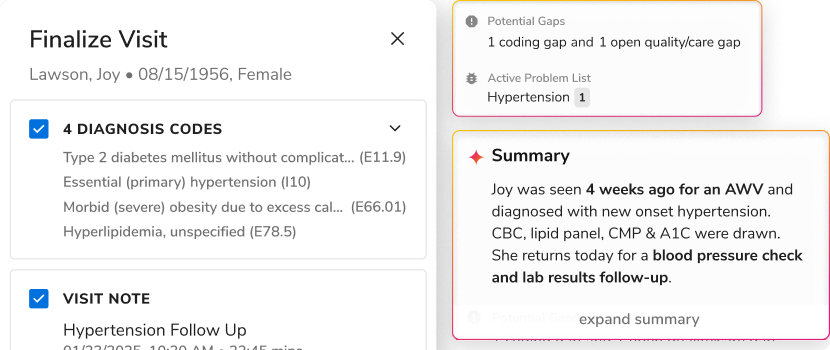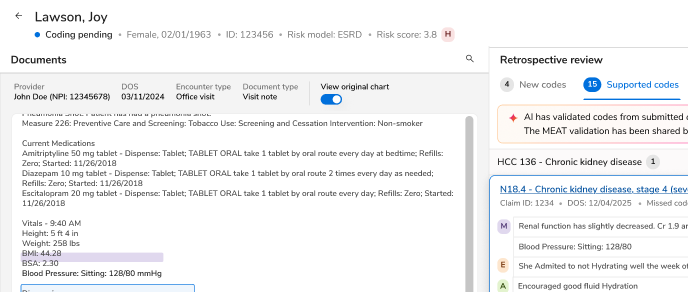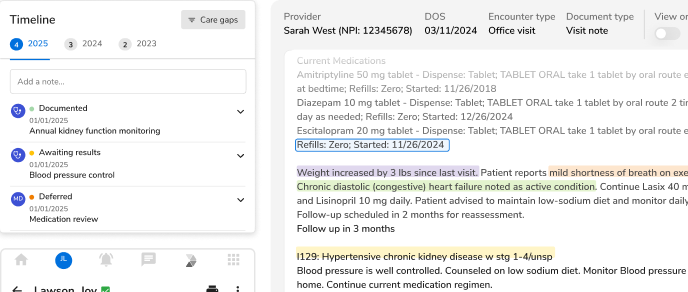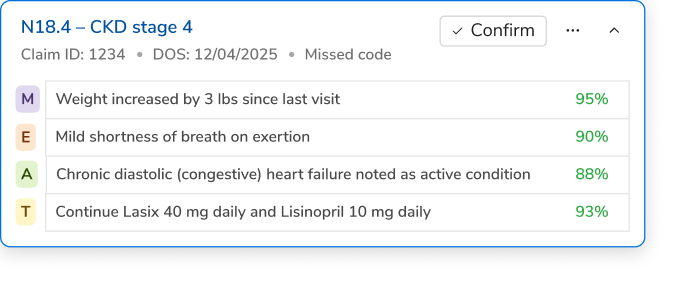The Real Reason Your Revenue Cycle Investments Aren't Paying Off


Even with healthcare CFOs’ continued investment in revenue cycle management technology over the years, many organizations are still facing the same challenges: increasing denials, long days in A/R, and worsening margins. If this sounds familiar, don't worry - you are not the problem.
It isn't that you aren't investing enough in RCM technology; the issue is probably that you are trapped in point solution purgatory: a fragmented ecosystem of disconnected tools that lead to individual wins but don’t transform the enterprise.
The Hidden Cost of Fragmented RCM Solutions
Many healthcare organizations have built their revenue cycle technology ecosystem piece-by-piece, adding specialized tools to alleviate areas of pain when they arise. That seems reasonable on the surface: identify a pain point, find the best solution, use it to address the pain point, and proceed to the next pain point.
The issue is that this results in a series of separate systems that, however effective, work against each other instead of working harmoniously with each other. Consider what a typical health system's RCM technology landscape looks like: independent solutions for prior auth, claims processing, denial management, patient estimation, and revenue cycle payments - each requiring their own flows of data, training for users, and maintenance.
As a result of independent technology solutions, the staff spends more time managing the technology than managing revenue. Data siloes prevent you from seeing the totality of your revenue cycle outcomes. Perhaps most costly of all, you are spending premium prices for multiple point solutions and losing valuable operational efficiencies due to the lack of an integrated solution.
The True Cost of Point Solution Chaos

A Framework for Evaluating Your RCM Strategy
Before investing in another point solution, use a framework to assess whether your current approach is helping or hurting your bottom line. The following framework covers integration, ROI, scalability and staff satisfaction:
The Integration Assessment
Map out every technology touchpoint in your revenue cycle process and ask yourself:
- How many times must data be manually transferred between systems?
- How many separate logins does your staff require daily?
- Where does information get duplicated or lost in translation?
- Are your teams spending more than 20% of their time on system navigation rather than problem-solving?
If the answers reveal significant fragmentation, integration issues are costing you money every day.
The ROI Reality Check
| Cost Category | Visible Expenses | Hidden Strategic Impact |
|---|---|---|
| Software Licensing | Annual subscription fees and user-based pricing | Multi-year escalation clauses that compound over time; vendor lock-in limiting negotiation power |
| Implementation | Professional services and system configuration | Internal resource opportunity cost; disruption to ongoing operations during deployment |
| Training & Support | Initial staff training and ongoing help desk | Continuous certification requirements; knowledge loss during staff turnover |
| Integration Maintenance | API management and data mapping services | System updates that break existing connections; vendor changes requiring costly rework |
| Workflow Inefficiencies | Productivity loss from system switching | Staff frustration leading to turnover; delayed decision-making from incomplete data visibility |
The Scalability Test
Evaluate your technology stack's adaptability by asking these questions:
- Can your systems adapt to new regulations without costly upgrades?
- Do you have to manually configure multiple different tools when payers change their requirement?
- Will your organization have to adopt additional point solutions for growth?
- Are you trapped in long-term commitments and unable to adapt and change?
The Staff Satisfaction Reality
Your revenue cycle team's experience directly impacts performance. Warning signs include:
- Frequent complaints about system complexity
- High turnover in revenue cycle positions
- Inability to see complete patient account pictures
- Reliance on workarounds to complete basic tasks
Agentic AI Platforms Over Point Solutions
The organizations seeing real returns on their RCM investments have moved beyond point solutions toward comprehensive agentic AI platforms that deploy intelligent agents working together seamlessly. Rather than managing multiple disconnected tools, these platforms create specialized agents that optimize every aspect of revenue cycle performance. One such platform is Innovaccer’s Flow.
Optimizing Revenue Cycle Management with Flow by Innovaccer
Flow by Innovaccer transforms revenue cycle management by automating and streamlining workflows across the entire patient journey. Flow Access maximizes scheduling and utilization: the Scheduling Agent fills open slots based on provider and patient needs, while the Intake Agent reduces front-desk workload and ensures complete data capture for clean claims. The Eligibility and Prior Auth Agents prevent payment surprises by verifying coverage upfront and accelerate pre-authorizations, protecting revenue and patient satisfaction.
Flow Care gives providers more time with patients: the Scribing Agent captures hands-free documentation, and the Pre-visit Prep Agent delivers ready-to-review summaries and decision support. The CDI and Coding Agents and the Claims Submission Agent maximize reimbursements by ensuring compliance, reducing errors, and boosting first-pass claim acceptance. Flow Collect accelerates cash flow with Denials Management and Payment Posting Agents. Finally, the Insight Agent delivers real-time financial and operational insights, enabling confident, data-driven decisions.
Your Next Steps
The revenue cycle management landscape is rapidly changing due to growing regulatory complexity, more payer requirements, and increasing patient financial responsibility. Organizations that hold on to fragmented point solution approaches will find themselves at an increasing disadvantage against those who have shifted to unified agentic AI platforms.
Your immediate prescription for next steps includes:
- Conduct the RCM assessment using the framework described above to quantify your overall technology ROI
- Map your integration gaps to understand where data silos are costing you financially
- Assess your overall technology debt including all hidden costs associated with maintaining multiple point solutions
- Survey staff satisfaction with current systems indicating where productivity loss is being created
If your results indicate that your investments are not providing the expected ROI, adding agentic AI agent powered solutions like Flow by Innovaccer should be considered to improve your revenue cycle performance and eliminate the complexities associated with keeping multiple disconnected systems.
The goal is not to have the most revenue cycle technology: rather it is to have the right intelligent agents all working together to improve your organization’s financial journey.
Ready to transform your organization’s RCM with Innovaccer’s Flow. Book a demo now.

.png)





.png)









.svg)
.svg)

.svg)

